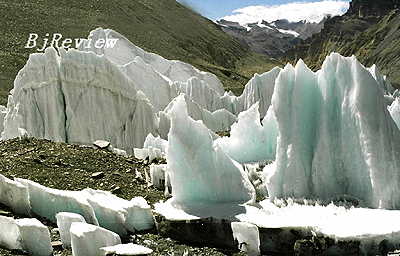
Increasing international pressure on China to cut the release of greenhouse gases and its own development bottleneck have often put the country in a dilemma.
Yet China has never given up being environmentally responsible in the international community.
On June 4, the NDRC publicized China's first national action plan to address climate change and reduce greenhouse gas (GHG) emissions.
Under the National Climate Change Program, the first by a developing country, China pledged to restructure its economy, promoting clean technologies and improving energy efficiency.
"We must reconcile the need for development with the need for environmental protection," Ma Kai, head of the NDRC, told reporters at a press conference.
"In its course of modernization, China will not tread the traditional path of industrialization, featuring high consumption and high emissions. In fact, we want to blaze a new path to industrialization."
Internal demand
When China enacted its 11th Five-Year Social and Economic Development Plan (2006-10), the country decided to push down its energy consumption per unit of gross domestic product by 20 percent over the five years. The realization of the goal of enhancing energy efficiency will contribute to the GHG emission control since China relies on coal for about 70 percent of its energy needs.
During the annual session of the National People's Congress, China's top legislature, this March, Ma said although the annual goal of energy saving in 2006 wasn't fulfilled, the government could not be more serious about achieving the goal at the end of the five years.
China is willing to pay the economic price for the upgrading of industrial structure, necessary for building a low-pollution and high energy-efficiency society. Early this year, the Chinese Government set the annual economic growth target at 8 percent despite double-digit growth for the last four years.
During the opening chapter, the National Climate Change Program explored the hazards of climate change on China, saying "drought in north and northeast China, and floods in the middle and lower reaches of the Yangtze River and southeast China have become more severe. Annual rainfall in most years since 1990 has been larger than normal, with the precipitation pattern being bipolar, corresponding to frequent disasters in the north and floods in the south." The report also predicts that the possibility of more frequent occurrences of extreme weather.
At the close of 2006, the warmest year in China since 1951, the country issued its first-ever national assessment report on climate change. The four-year project concluded that climate change poses a threat to China's diverse ecosystems, to its water, forests, coasts, and other natural resources and its long-term food security.
The report says output of major crops in China such as wheat, rice, and corn could fall by up to 37 percent in the second half of the century. If no effective measures are taken in the next 20 to 50 years to address climate change impacts, China's long-term food security will be at the stake.
Fair share of duty
President Hu Jintao has pointed out that both as an environmental issue and a development issue, climate change, in the final analysis, falls in the category of development.
| 